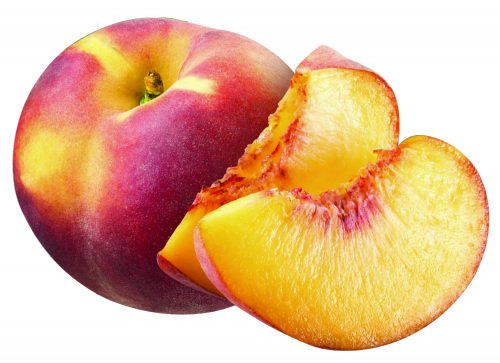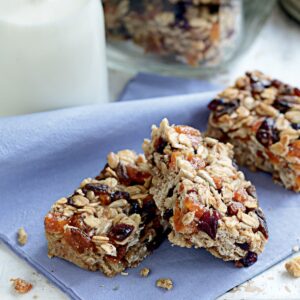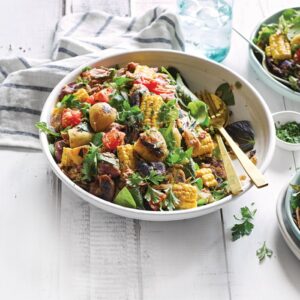
Nectarines
Choose firm fruit with just a little give. Plumpness and a slight softening along the seam are signs of mature fruit. Picked nectarines will become softer and juicier but not sweeter.
Nutrition
Nectarines contain many nutrients, including vitamin C, vitamin A, potassium and fibre. Nectarines are a good source of antioxidant carotenoids such as beta-carotene.
Use
Nectarines are best eaten at room temperature, are great with cereal and in sweet and savoury salads.
Recipe idea
Nectarine sponge with blueberries
Cherries
Store cherries in the fridge for up to a week to keep their flavour and texture intact. To freeze cherries, rinse and drain fruit, lay them on a tray, freeze then store in a plastic bag. Frozen fruit may be kept for up to a year.
Nutrition
Cherries are a low-kilojoule sweet treat that provides vitamin C and a range of other potent antioxidants.
Use
Gently wash sweet cherries and eat raw, added to fruit platters or add pitted cherries to trifles and fruit salads.
Recipe idea
Cherry almond fairy cakes with pistachio dust
Shallots
It would be a mistake to think these are just another name for spring onions. Shallots, also known as gourmet onions, are actually smaller, sometimes clustered, milder and sweeter flavoured brown onion relatives.
Nutrition
Shallots contain antioxidant flavanoids.
Use
Banana shallots are the largest variety with a long, torpedo shape and mild flavour. Peel and chop shallots finely (use in dressings, sauces and stews), or roast whole (20 minutes) with or without their skins.
TIP: Shallots contain much less water than onions so remember they need to be cooked more gently to avoid burning.
Recipe idea
Article sources and references
- Ismail A et al. 2004. Total antioxidant activity and phenolic content in selected vegetables. Food Chemistry 87:581-6https://www.semanticscholar.org/paper/Total-antioxidant-activity-and-phenolic-content-in-Ismail-Marjan/316dc229910d392aeb8f0a9f62dd90e97d78487e
- Lister C. 2003. Antioxidants: a health revolution. Christchurch; New Zealand Institute for Crop & Food Research Limitedhttps://www.plantandfood.co.nz/
www.healthyfood.com










